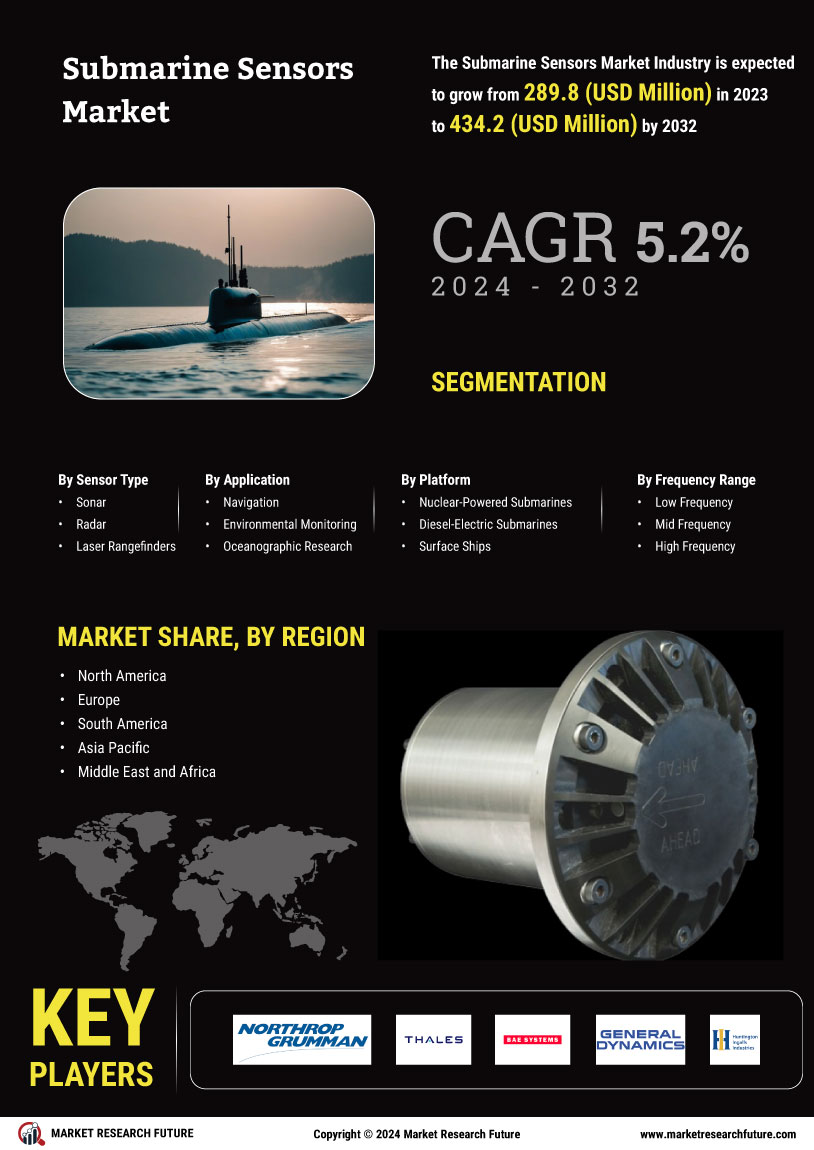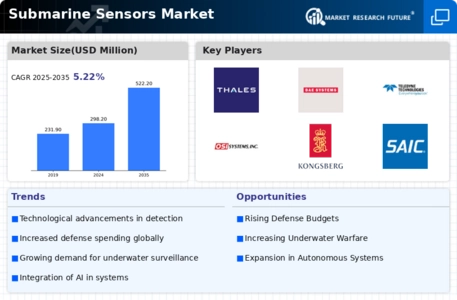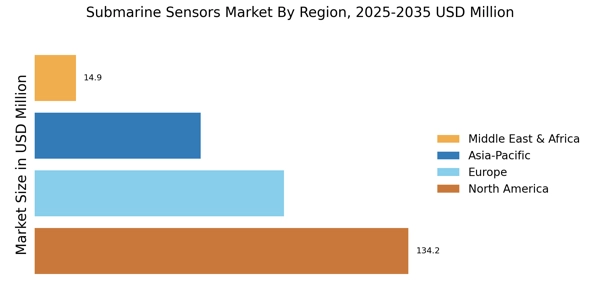Geopolitical Tensions
Geopolitical tensions across various regions are significantly influencing the Submarine Sensors Market. Nations are increasingly focusing on enhancing their underwater surveillance capabilities to address potential threats. This has led to a rise in defense budgets, particularly in countries with strategic maritime interests. For example, the Asia-Pacific region has seen a notable increase in submarine acquisitions, which in turn drives the demand for advanced sensor technologies. The market is expected to witness a growth trajectory as countries prioritize national security and invest in submarine capabilities, thereby creating a favorable environment for sensor manufacturers.
Environmental Monitoring
The Submarine Sensors Market is also being propelled by the growing need for environmental monitoring. Submarines equipped with advanced sensors are increasingly utilized for scientific research and environmental assessments. These sensors can collect data on oceanographic conditions, marine life, and underwater ecosystems, contributing to a better understanding of climate change impacts. The market for environmental monitoring sensors is projected to expand, as governments and research institutions recognize the importance of underwater data collection. This trend not only supports scientific endeavors but also enhances the capabilities of submarines, thereby fostering growth in the sensor market.
Technological Advancements
The Submarine Sensors Market is experiencing a surge in technological advancements, particularly in sensor miniaturization and data processing capabilities. Innovations such as artificial intelligence and machine learning are being integrated into sensor systems, enhancing their operational efficiency and accuracy. For instance, advanced sonar systems are now capable of detecting underwater threats at greater distances and with improved resolution. The market is projected to grow at a compound annual growth rate of approximately 5.2% over the next five years, driven by these technological enhancements. As nations invest in modernizing their naval fleets, the demand for sophisticated submarine sensors is likely to increase, indicating a robust future for the industry.
Increased Naval Investments
Increased investments in naval capabilities are a key driver for the Submarine Sensors Market. Many nations are recognizing the strategic importance of submarines in modern warfare and are allocating substantial resources to enhance their naval fleets. This includes the procurement of advanced submarine sensors that provide critical data for operational success. For instance, the United States and several European countries are investing heavily in next-generation submarines, which require state-of-the-art sensor technologies. This trend is likely to continue, as nations seek to maintain a competitive edge in maritime security, thereby bolstering the submarine sensor market.
Emerging Commercial Applications
The Submarine Sensors Market is witnessing a diversification of applications beyond military use, particularly in commercial sectors. Industries such as oil and gas, underwater construction, and marine research are increasingly adopting submarine sensors for various purposes, including resource exploration and environmental monitoring. The demand for underwater data collection in these sectors is expected to grow, as companies seek to optimize operations and ensure compliance with environmental regulations. This shift towards commercial applications presents new opportunities for sensor manufacturers, potentially leading to a more dynamic and expansive market landscape.

















Leave a Comment